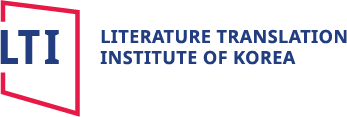-
Party Wave's
[Polish]Zdeptana trawa, która rośnie na nowo
Zuzanna GajowniczekPOLAND
2023.10.18.
Trawa to komiks wydany w Korei w 2017 roku. W Polsce miał on premierę cztery lata później, a jego polską edycję w przekładzie Łukasza Janika opublikowało wydawnictwo Centrala. Keum Suk Gendry-Kim urodziła się w 1971 roku. Autorka studiowała zarówno w Korei, jak i zagranicą, a na swoim koncie – obok Trawy – ma kilka innych komiksów, takich jak wydany w 2020 roku Jun. Trawa, oprócz polskiego, została przetłumaczona na kilkanaście innych języków i nagrodzona kilkoma prestiżowymi nagrodami.
Tematem powieści jest historia pocieszycielek (kor. wianbu, ang. comfort women), kobiet zmuszanych do pracy seksualnej podczas wojny na Pacyfiku, a konkretnie historia głównej bohaterki, Lee Ok-Seon. Nie jest ona postacią fikcyjną. Trawa to opowieść oparta na prawdziwej historii pani Lee, która przez ostatnie lata życia walczyła o zachowanie pamięci o kobietach, które przeszły podobne piekło. Pani Lee zmarła w wieku 94 lat niespełna rok temu, a obecna liczba ocalałych żyjących kobiet pocieszycielek wynosi w Korei mniej niż dziesięć.
W powieści autorka osadziła samą siebie. Spotyka się ona z panią Lee w tak zwanym Domu Wspólnoty w mieście Gwangju, gdzie mieszkają ocalałe pocieszycielki. Podczas rozmów autorka ma nadzieję zebrać cenny materiał na komiks. Ze wspomnień pani Lee dowiadujemy się o jej trudnym dorastaniu w biednej chłopskiej rodzinie w Busan, a także o okolicznościach jej odejścia z domu w wieku niespełna trzynastu lat. “Adopcja” dziewczynki, jak nazywane są te okoliczności w powieści, stanowią początek jej tragicznej samotnej historii. Po wojnie pani Lee zamieszkuje w Chinach, a wraz z początkiem lat dwutysięcznych wraca do ojczyzny, gdzie udaje jej się spotkać ponownie rodzinę, z którą nie miała kontaktu od dziecięcych lat.
Osobista historia pani Lee stanowi główny punkt narracji powieści. Tło komiksu nakreślają z kolei krótkie uzupełnienia o przełomowych wydarzeniach historycznych, takich jak wybuch wojny japońsko-chińskiej, czy masakra nankińska. Oprócz tego przedstawiono fakty życia codziennego pod okupacją japońską przedstawicieli najniższych warstw. Co jednak wyróżnia Trawę na tle licznych tekstów na temat historii pocieszycielek to ludzki, indywidualny pierwiastek tej powieści. Z jednej strony komiks opowiada o brutalnych wydarzeniach z życia pani Lee, z drugiej momentami wywołuje nawet ciepły śmiech. Jak pisze zresztą sama autorka, starała się w odpowiedni, pełen szacunku sposób przekazać głos bohaterki. Aby zachować subtelność, w powieści nie zawarła chociażby wulgarnego języka.
Mimo że styl rysunku pozbawiony jest przesadnego naturalizmu, jest surowy i często karykaturalny. Rysunki przekazują emocjonalny ładunek powieści, a także zawierają w sobie wiele szczegółów, z których odczytać można jeszcze więcej cennych informacji na temat
realiów Korei podczas wojny. Przedstawienie natury w komiksie znacznie skojarzyło mi się z kolei z tradycyjną formą koreańskiego malarstwa pejzażowego sumukhwa (dosł. “obrazy namalowane wodą i tuszem”). Obrazy w tym stylu cechuje prostota, jednolite kolory, subtelność i surowość za jednym razem, co z kolei idealnie opisuje nastrój komiksu.
Tytułowa trawa symbolizuje ocalałe pocieszycielki:
“Trawa rośnie dzielnie, mimo wiatru i depczących ją stóp […] Zima się kończy. Mróz, który wydawał się niepokonany, odchodzi. Nadchodzi wiosna.” – Trawa, s. 476 i 479
Rośliny, takie jak trawy, bambusy i śliwy – chętnie malowane przez dawnych artystów – stanowiły symbol odnowy, odrodzenia, a także siły w samotności. W powieści są symbolem życia ocalałych ofiar.
Na uwagę w edycji zasługuje także wstęp autorstwa Joanny Ostrowskiej, a także posłowie Yun Myeong-suk. Obie autorki zajmują się badaniem historii niewolnic seksualnych. W krótkich tekstach przybliżają problemy, z jakimi zmagają się ocalałe, a także przypominają między innymi, że skala tragedii wykracza poza Koreę. W książce zawarte zostało także słowo od autorki komiksu.
Przed otrzymaniem długo wyczekiwanej paczki z książkami nie planowałam rozpoczęcia projektu od powieści graficznej. Nie czułam się wystarczająco zaznajomiona z komiksową formą powieści. Miałam wcześniej styczność głównie z koreańskimi web toonami, po które sięgałam głównie w celach językowych. Przewijały się też komiksy akcji, takie jak Breaker, który miałam okazję przeczytać nawet w wersji polskiej. Mimo to czułam potrzebę odłożenia recenzji powieści graficznej na później. Otworzywszy jednak paczkę, Trawa przykuła moją uwagę pierwsza – jest to pięknie wydany, ogromny (bo liczący prawie 500 grubych stron) komiks. Pochłonęłam go w niespełna godzinę, jednak zebranie myśli po lekturze zajęło mi znacznie więcej czasu. Komiks wzbudził we mnie bowiem ogromne emocje, których się nie spodziewałam: byłam przecież obeznana w temacie pocieszycielek. Mimo to, w porównaniu do wielu chłodnych opracowań i reportaży, to wspomniany osobisty pierwiastek Trawy sprawia, że warto po nią sięgnąć.
1Trawa, s. 476 i 479
-
-
Editorial Reviews
[French]« Par une nuit claire » par Kim Yi Sak
KOWLSFRANCE
2023.10.06.
Translations:Par une nuit claire -
-
Editorial Reviews
[French]L’Odyssée des étoiles : Un roman de science-fiction coréenne qui voyage dans le temps
MediumFRANCE
2023.10.06.
Authors:김보영
Translations:L'odyssée des étoiles -
-
Editorial Reviews
[French]L’Odyssée des étoiles – Kim Bo-Young
L'epaule d'OrionFRANCE
2023.10.06.
Authors:김보영
Translations:L'odyssée des étoiles -
-
Editorial Reviews
[French]“Impossibles Adieux”, le récit pétri de poésie de la Coréenne Han Kang
TéléramaFRANCE
2023.09.20.
Authors:한강
Translations:Impossibles adieux -











